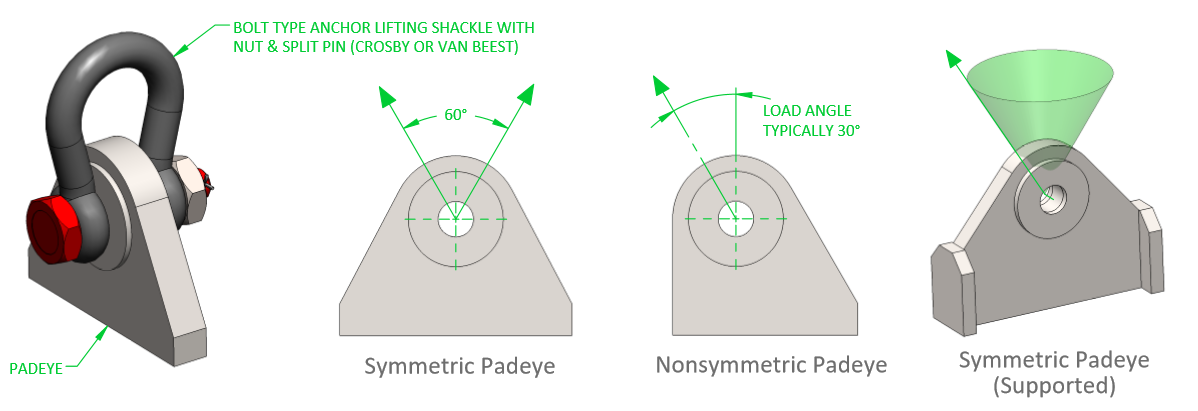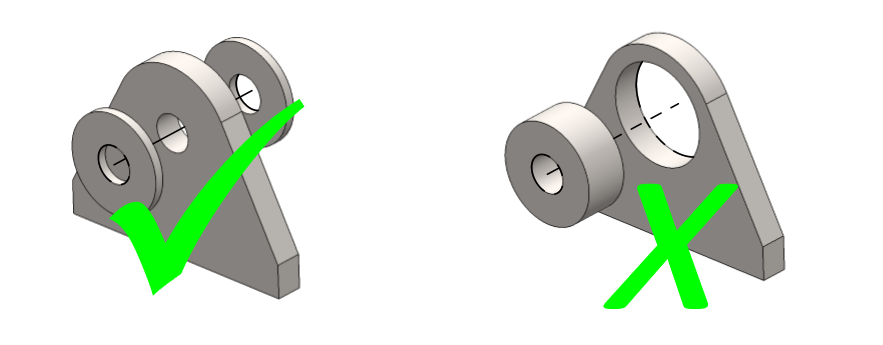The following guide gives an overview of padeye design based on DNV design rules and common industry practice.
For any manufactured equipment, the geometry of the padeye must match the size of shackle to be used to ensure a rated connection between the equipment and the lifting set.
DNV states two key sizing rules which are of importance:
- The diameter of the holes in the padeye shall match the shackle used, clearance between shackle pin and padeye hole shall not exceed 6% of the shackle pin diameter.
- The thickness of the padeye at the hole shall not be less than 75% of the inside width of the joining shackle
The correct design of padeye should be selected based on the particular load application. For straight lifting angles a symmetric padeye design should be used, for a multi-point lift as in a offshore container or frame then a nonsymmetric design can be used. If required plated supports can be added to the symmetric design to increase the lateral stiffness of the padeye, useful when the padeye will be subjected to dynamic load angles.
 For a multi-point lift it is essential that the padeyes point directly to the lift point centre to prevent lateral bending moments on the padeyes, DNV suggest a tolerances of 2.5 degrees as an allowable misalignment.
For a multi-point lift it is essential that the padeyes point directly to the lift point centre to prevent lateral bending moments on the padeyes, DNV suggest a tolerances of 2.5 degrees as an allowable misalignment.
For padeyes rated above 2000kg capacity cheek plates must be fitted to reduce the play in the shackle-padeye connection. These must be fitted as additional plates welded onto the padeye profile and not a single boss as shown below.

Padeye Materials
For equipment used in a marine environment, all padeye materials are to be S335J2 (BS EN 10025) supplied with 3.1 material inspection certificates to BS EN 10204.
Padeye Welding
All padeyes must be welded to the primary struture by use of full penetration welds. It is good practure to extend the base of the padeye to pass it completely through the structural member which it is connected to. If welding directly onto horizontal plate then the plate must be specified as EMZ grade to prevent delamination of the plate under tensile load.
When sizing the correct padeye for your application consider the following:
- Maximum foreseen gross load
- Load test requirements
- Dynamic amplification factor (DAF)
- Drag load on equipment when lifting through water
- Potential captured water weight when lifting equipment out of water
This document has been created as a guide and should not be used as a substitute to correct design calculations. All lifting frames including padeye design should be checked by calculation and ideally independently checked and approved prior to manufacturing. Post manufacture load testing must be performed prior to equipment use.
For a complete dimensional overview of standard padeye designs please click below:
Do you have children? – check out this product



